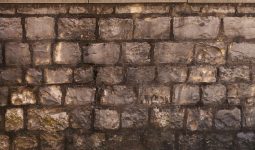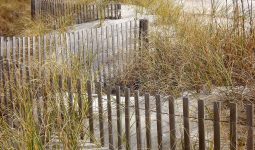Based on your goals, there are appropriate and inappropriate sprinkler head types to avoid.
We’re here to clear up any confusion and point you in the right direction.
Sprinklers are unquestionably beneficial, whether you want to run through the spray and relive the wonderful summer days of your youth, get your backyard oasis to bloom, or keep your building protected against fires.
Of course, the sprinkler head makes your sprinkler system unique. Each sprinkler head is suited to a different purpose—irrigation or fire protection—because this component determines the type of spray you receive.
Here are the different types of sprinkler heads. In this article, I will discuss the irrigation and fire protection types.
Please Read on.
1. Pop-Up Sprinklers
Pop-up sprinklers are the most widely used sprinklers for irrigation; they are the pendant-style sprinkler heads of the irrigation world.
These sprinklers are used in both commercial and residential in-ground irrigation systems.
The body can be entirely buried in the ground; upon activation, it rises to the surface.
The popping-up feature is convenient because it prevents you from being caught off guard and having your face awkwardly crash to the ground.
Additionally, it prevents unnecessary obstacles from sticking out of the ground in your backyard when you’re not using the sprinkler, leaving it looking tidy and clean.
As a result, the sprinkler head will last longer because it won’t be damaged by the weather, a lawnmower, or other activities when not in use.
Furthermore, pop-up sprinkler heads typically have a 2 to 20 inches diameter and can shoot water up to 15 feet.
Pop-up sprinkler head types work great for grassy areas and lawns, where blades are typically around 3 inches. When activated, they rise to a height of 4 inches.
The sprinkler head is just tall enough to spray them over the grass.
Also, six-inch pop-up sprinklers are excellent for turfs and zones because they have enough height and reach to cover the grass, even if the lawn gets a little longer.
2. Fixed Spay Heads
These tiny sprinkler heads produce a water spray that resembles a shower nozzle shaped like a fan.
However, you can install interchangeable nozzles on the sprinkler to create a variety of water-spray patterns with various radii (specific ways are designed for narrow, long areas).
Such sprinkler systems have spray heads roughly 18 feet apart and need 20 to 30 psi of water pressure to function correctly. This is one of the different types of sprinkler heads.
3. Rotor Heads
Actually, “rotor heads” refer to all sprinklers that rotate streams of water in a circular motion over the ground.
One of the most popular types is a rainbird or impact sprinkler, which can be identified by the sound it makes when it operates.
As previously mentioned, there are many different sprinkler head rotor types; gear-driven and multi-stream rotors are the most common, along with impact rotors.
Compared to impact rotors, the former has one or more streams of water and is quieter, smaller, and easier to maintain.
As its name suggests, the latter has numerous water streams and sprinkler heads from 8 to 65 feet apart.
Also, sprinkler heads require more water pressure to operate farther apart.
4. Shrub Sprinklers
Unlike pop-up sprinklers, shrub sprinklers are always visible whether or not they are used. They are made to be mounted on top of pipes above ground.
These got their name because you frequently used them to water shrubs.
These sprinkler heads are only used in circumstances with few options but are gradually becoming obsolete.
Additionally, these sprinklers are fall hazards because they are always above ground. This is one of the different types of sprinkler heads.
5. Flood Bubbler
There are many different types of bubblers, including flood bubblers. A flood bubbler can be either adjustable or non-adjustable; the former is a tiny water valve with a knob or screw to control the water flow.
The amount of valve opening determines the water flow. The latter, non-adjustable flood bubblers, have a fixed water flow rate (the rate varies depending on the brand and retailer, with the most popular values being 14, 12, 1, and 2 GPM).
Each shrub or space between two shrubs has a fixed head. Apart from the lack of adjustability, there are no differences between adjustable and non-adjustable bubbler sprinkler head types.
6. Stream Bubbler
Another kind of bubbler emits slender streams of water between 2 and 5 feet away from it.
These work well for watering plants in the immediate area but are not great for widespread flooding.
Like other bubblers, stream bubblers must be positioned on level ground to avoid puddles and runoff. This is one of the different types of sprinkler heads.
7. Micro Bubbler
Micro-bubblers have a lower flow than their siblings and are frequently sold and packaged as adjustable flow-drip emitters.
These bubblers have barbs that make it simple to install them on poly-drip tubing.
Micro bubbler release more than four gallons of water every hour.
However, this amount is insufficient to qualify the device as a true bubbler.
Once the soil has absorbed the water, it is sufficient to produce puddles and pools on the surface.
Furthermore, the flow of micro-bubbler sprinkler heads is too low to be compatible with rotor or spray sprinklers.
Despite their adjustable flow, you shouldn’t use them on the same valve circuit. This is one of the different types of sprinkler heads.
8. Upright Sprinklers Head
As the name suggests, upright fire sprinkler heads are upright. These sprinkler heads have deflectors curved downward and point toward the ceiling.
Causing the water to spray in a downward hemispherical pattern.
Since upright sprinkler heads provide coverage between obstacles like air ducts and beams, they are most frequently used in mechanical and inaccessible rooms. Such sprinkler heads also offer a circular spray pattern.
9. Pendant Sprinkler Head
Although most people may not be familiar with these by name, we are.
The most prevalent fire-fighting sprinkler head designs are pendent types used in various structures nationwide, including factories, offices, and hotels.
One type of sprinkler head is suspended from the ceiling. When turned on, it releases water in a circular motion to cover as much ground as possible.
Furthermore, the deflector in the head is also curved downward to direct the water in a cone-shaped position or manner.
10. Concealed Sprinkler Head
In contrast to pendent sprinkler heads, concealed sprinkler head types are concealed.
A cover plate is included with these sprinklers to help them blend in with their surroundings (your ceiling, in this case).
This plate is made to come off as soon as your sprinkler senses an air temperature 20 degrees lower than the temperature it will activate, allowing it to start working as soon as it comes into contact with the fire and the heat.
Furthermore, when the sprinkler is activated, the previously hidden head lowers to the ceiling, spraying water in a circle to cover as much ground as possible. This is one of the different types of sprinkler heads.
11. Sidewall Sprinkler Head
Sidewall sprinkler heads, one of the different types of sprinkler heads, are ideal for areas where ceiling-mounted sprinklers cannot be installed, such as small rooms, hallways, and corridors.
The water sprays in a semicircle and covers the entire area because these sprinkler heads only have a partial deflector.
Sprinkler heads for sidewalls are typically mounted in the wall that runs alongside or beneath a beam. When installed, the head protrudes from the wall.
A second deflector protects the wall where the sprinkler is installed by spraying water back towards it, while the first deflector directs the water in a half-circle.








